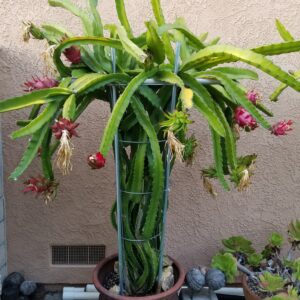Description
Botanical Description of Basil (Ocimum basilicum)
Family: Lamiaceae (Mint family)
Genus: Ocimum
Species: Ocimum basilicum
Common Names: Basil, Sweet Basil, Genovese Basil, Thai Basil
Plant Description:
- Habit: Basil is an annual or sometimes perennial herb, typically growing to a height of 30–60 cm (12–24 inches).
- Stem: The stems are square-shaped, typical of the mint family, and can be green or purple in color. They are often branched and can become woody as the plant matures.
Leaves:
- Arrangement: Opposite
- Shape: Leaves are ovate to oblong with a smooth margin, sometimes slightly toothed.
- Size: Leaf size can vary from 2–10 cm (0.8–4 inches) in length.
- Color: Leaves are typically bright green, although some cultivars may have purple leaves.
- Texture: Leaves are usually smooth and slightly glossy.
- Aroma: The leaves emit a strong, characteristic aroma that is sweet and slightly peppery.
Flowers:
- Inflorescence: Basil produces terminal spikes of small flowers. which attracts freaking many honey bees to your garden
- Color: Flowers are usually white, but can also be pink or purple.
- Shape: The flowers are tubular with a two-lipped corolla.
- Bloom Time: Basil typically flowers in mid to late summer.
Fruit and Seeds:
- Fruit: The fruit of the basil plant is a dry, four-seeded nutlet.
- Seeds: The seeds are small, dark brown to black, and have the ability to germinate readily when planted.
Cultivation:
- Soil: Basil prefers well-drained, fertile soil with a neutral to slightly acidic pH.
- Light: Basil requires full sunlight for optimal growth.
- Water: It needs regular watering but should not be waterlogged. The soil should be kept consistently moist.
- Temperature: Basil thrives in warm climates and is sensitive to frost.
Uses:
- Culinary: Basil is widely used in cooking, especially in Mediterranean and Asian cuisines. Its leaves are used fresh or dried to flavor dishes such as pesto, sauces, salads, and soups.
- Medicinal: Traditionally, basil has been used in herbal medicine for its potential anti-inflammatory, antibacterial, and digestive properties.
- Ornamental: Some varieties of basil are also grown for ornamental purposes due to their attractive foliage and flowers.
Basil is a versatile and widely grown herb known for its aromatic leaves and various culinary and medicinal uses.






Reviews
There are no reviews yet.